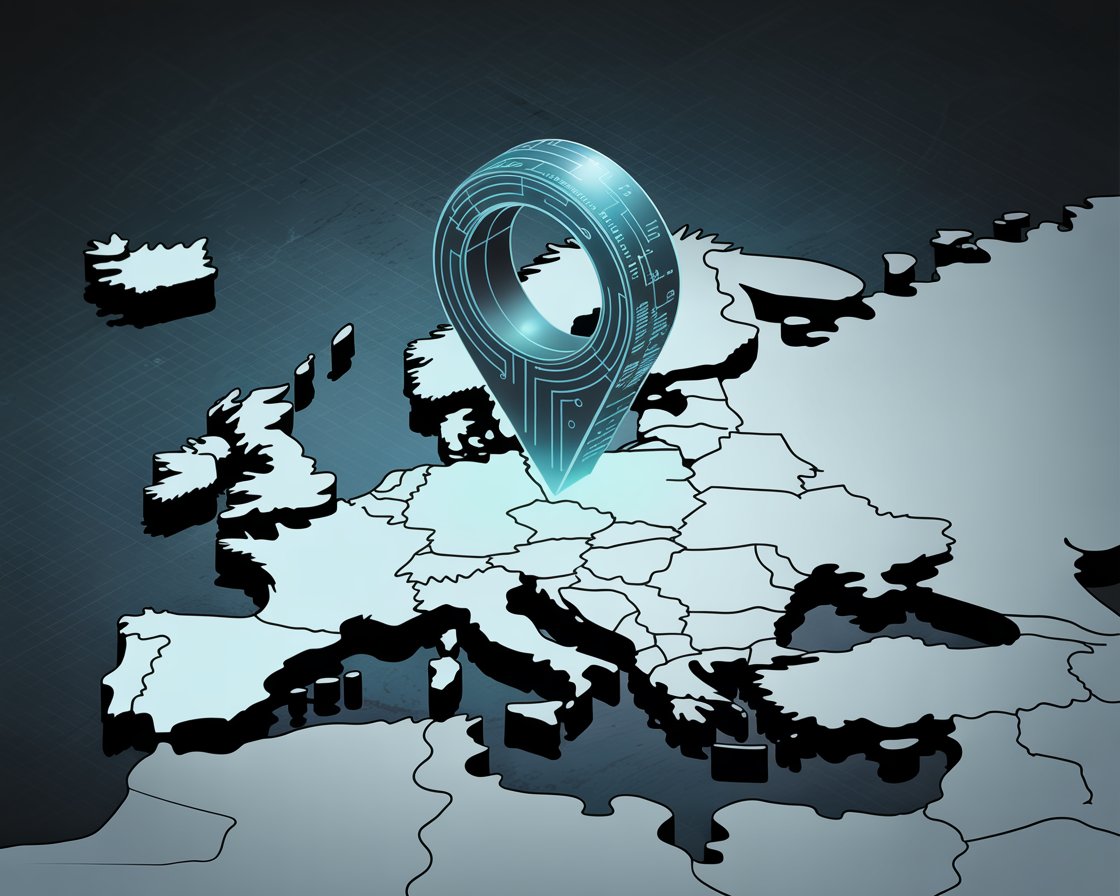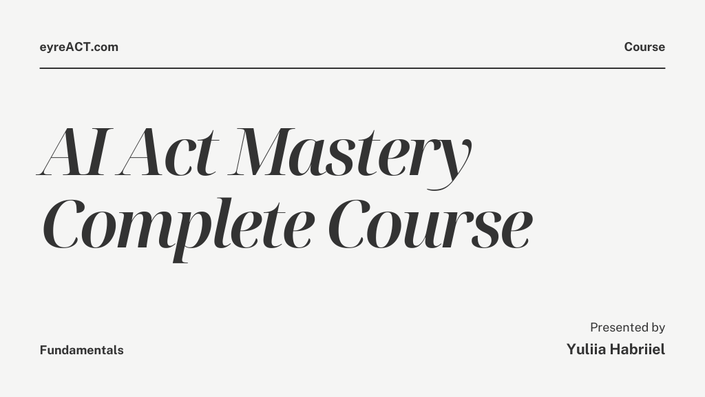The EU AI Act follows a phased implementation approach with critical milestones starting February 2, 2025 (prohibited AI bans) through August 2027 (full high-risk system compliance).
Organisations face potential fines up to €35 million or 7% of global turnover for non-compliance, making early preparation essential for maintaining market access and avoiding severe penalties.
Time is running out for organizations to prepare for the European Union’s groundbreaking Artificial Intelligence Act. As the world’s first comprehensive AI regulation, the EU AI Act doesn’t just flip a switch—it follows a carefully orchestrated timeline that gives organizations specific windows to achieve compliance.
Understanding these critical deadlines isn’t just about regulatory conformity. It’s critical for maintaining access to the European market and avoiding penalties that can reach into the tens of millions of euros.
The Phased AI Act Approach: Why Timing Matters
The AI Act entered into force on 1 August 2024, and will be fully applicable 2 years later on 2 August 2026, with some exceptions:
- Prohibitions and AI literacy obligations entered into application from 2 February 2025
- The governance rules and the obligations for general-purpose AI models become applicable on 2 August 2025
- The rules for high-risk AI systems – embedded into regulated products – have an extended transition period until 2 August 2027.
This staggered implementation recognizes the varying complexity of compliance requirements across different AI risk categories. It also provides organisations with time to adapt their systems, processes, and governance structures to meet the new regulatory standards.
Critical Deadlines: Your AI Act Compliance Calendar
February 2, 2025: Prohibited AI Systems Ban Takes Effect
✅ Already in Effect
As of February 2, 2025, AI systems deemed to pose “unacceptable risks” became strictly prohibited. This first wave of enforcement targets the most dangerous AI applications, including:
- Manipulative AI: Systems that deploy subliminal, manipulative, or deceptive techniques to materially distort behavior
- Social Scoring: AI systems that evaluate or classify individuals based on their social behavior or predicted personal characteristics
- Predictive Policing: AI systems used to predict criminal behavior by profiling individuals
- Real-time Biometric Identification: Facial recognition systems in publicly accessible spaces (with limited law enforcement exceptions)
What Organizations Must Do Now:
- Immediately cease use of any prohibited AI systems
- Conduct urgent audits to identify potentially prohibited applications
- Implement AI literacy training programs for employees involved in AI development and deployment
August 2, 2025: General-Purpose AI Models and Governance Rules
On August 2, 2025, governance obligations for GPAI model providers will become applicable. This deadline primarily affects providers of foundation models like large language models that can be adapted for various downstream applications.
Key Requirements Include:
- Technical documentation and transparency obligations
- Copyright compliance under EU law
- Training data summaries and content disclosure
- For systemic risk models: adversarial testing, incident reporting, and cybersecurity protections
Critical Actions by This Date:
- Designate national competent authorities (for Member States)
- Establish governance frameworks for AI oversight
- Implement penalties and enforcement mechanisms
- Begin GPAI model compliance documentation
August 2, 2026: High-Risk AI Systems (Annex III) Full Compliance
This represents the most significant compliance milestone for the majority of organizations. On August 2, 2026, the EU AI Act will become generally applicable and requirements around “high-risk AI systems” will go into effect.
High-Risk Systems Subject to These Requirements:
- Biometric identification and categorization systems
- Critical infrastructure management (energy, transport, water)
- Education and vocational training systems
- Employment, worker management, and recruitment tools
- Essential private and public services access systems
- Law enforcement applications
- Immigration, asylum, and border control management
- Administration of justice and democratic processes
Comprehensive Compliance Requirements:
- Rigorous conformity assessments before market placement
- Quality management systems and technical documentation
- Data governance and training dataset management
- Human oversight and transparency requirements
- Accuracy, robustness, and cybersecurity measures
- Post-market monitoring and incident reporting
- Registration in EU database systems
Member State Obligations:
- Member States shall ensure that their competent authorities have established at least one AI regulatory sandbox at national level
- Implementation of penalty frameworks and enforcement mechanisms
August 2, 2027: Extended Compliance Deadline for Regulated Products
AI systems that fall within this category have an additional 12 months from the date of general applicability, with full compliance required by 2 August 2027. This extended deadline applies to:
- High-risk AI systems embedded in regulated products (medical devices, automotive systems, aviation equipment)
- AI safety components requiring third-party conformity assessments
- Providers of GPAI models placed on the market before 2 August 2025 must have taken the necessary steps to comply with the obligations laid down in this Regulation by this date.
The High Stakes: Understanding EU AI Act Penalties
The financial consequences of non-compliance are severe and designed to be genuinely deterrent. The heftiest fines are imposed on operators for violations related to prohibited systems of up to €35,000,000 or 7% of worldwide annual turnover for the preceding financial year, whichever is higher. Here’s the penalty structure by violation type:
Tier 1 – Maximum Penalties (€35M or 7% global turnover):
- Using or distributing prohibited AI systems
- Punishments for failing to comply including a fine worth as much as 35 million Euros ($37 million) or 7% of global revenues, whichever is higher
Tier 2 – High Penalties (€15M or 3% global turnover):
- Non-compliance with high-risk AI system obligations
- Violations of provider, deployer, importer, or distributor requirements
- Breaches of general-purpose AI model obligations
Tier 3 – Moderate Penalties (€7.5M or 1% global turnover):
- Providing incorrect, incomplete, or misleading information to national authorities or notified bodies
Special Considerations for SMEs
Small and medium enterprises, including startups, receive some protection with fines capped at the lower threshold rather than the higher amount between percentage and absolute value.
Global Reach: Why Non-EU Organisations Must Pay Attention
The EU AI Act’s extraterritorial application means geography provides no protection. The regulation applies to any organization whose AI systems produce outputs used within the European Union, regardless of where the organization is headquartered or where the AI system operates.
Examples of Global Application:
- U.S.-administered qualifications such as the Test of English as a Foreign Language (TOEFL) will find themselves covered under the AI Act. Those undertaking TOEFL in Europe have their answers scored in the U.S. by a process that utilizes both AI and human effort
- Cloud-based AI services accessed by EU users
- Software products distributed in EU markets containing AI components
- International companies with EU subsidiaries or customers.
Strategic Preparation: Your Action Plan by Timeline
Immediate Actions (Now through 2025):
- Complete AI System Inventory: Catalog all AI systems currently in use or development
- Risk Classification Assessment: Determine which systems fall into prohibited, high-risk, limited-risk, or minimal-risk categories
- Governance Structure Setup: Establish AI oversight committees and compliance workflows
- Legal and Compliance Team Alignment: Ensure proper interpretation of obligations within your specific context
- Vendor Due Diligence: Assess third-party AI providers’ compliance readiness
2025-2026 Preparation Phase:
- Documentation Systems: Develop technical documentation and quality management processes
- Conformity Assessment Planning: Prepare for required third-party assessments
- Data Governance Implementation: Establish training data quality and bias mitigation processes
- Human Oversight Integration: Design meaningful human control mechanisms
- Incident Response Protocols: Create serious incident reporting and remediation procedures
2026-2027 Final Implementation:
- System Registration: Complete EU database registrations for high-risk systems
- Post-Market Monitoring: Implement ongoing performance monitoring and evaluation
- Compliance Verification: Conduct final audits and assessments
- Staff Training: Ensure all relevant personnel understand compliance obligations
- Continuous Monitoring: Establish ongoing compliance verification and update procedures
The Competitive Advantage of Early Compliance
While compliance timelines establish minimum requirements, organisations that achieve early compliance gain significant advantages:
Market Access Benefits:
- Continued operation in the world’s largest economy
- Enhanced customer trust and competitive differentiation
- Reduced legal and regulatory risk exposure
Operational Improvements:
- Better AI governance and risk management
- Enhanced data quality and system reliability
- Stronger cybersecurity and incident response capabilities
Strategic Positioning:
- Leadership in responsible AI development
- Readiness for future regulatory developments globally
- Attraction of privacy-conscious customers and partners
Looking Beyond 2027: Long-Term Compliance Considerations
The EU AI Act includes provisions for ongoing evaluation and potential updates. Commission shall carry out an assessment of the enforcement of this Regulation and shall report on it to the European Parliament, the Council and the European Economic and Social Committee.
Organisations should expect:
- Regular updates to high-risk system classifications
- Evolution of technical standards and requirements
- Potential expansion of obligations based on technological developments
- Harmonisation with other jurisdictions developing similar frameworks.
Final Thoughts: The Window for Preparation Is Narrowing
With prohibited AI systems already banned and high-risk system compliance deadlines approaching rapidly, organisations cannot afford to delay their EU AI Act preparation. The regulation represents more than a compliance exercise—it’s a fundamental shift toward responsible AI development that will influence global standards for years to come.
The message is clear: Organisations that proactively address these timelines will not only avoid substantial penalties but position themselves as leaders in the emerging landscape of trustworthy AI. Those that wait risk not only financial consequences but exclusion from one of the world’s most important markets.
The EU AI Act timeline is the foundational roadmap to the future of AI governance. Understanding and preparing for these critical deadlines isn’t optional; it’s essential for any organisation serious about succeeding in the AI-driven economy of tomorrow.
Don’t Leave AI Act Compliance to Chance
With high-risk AI deadlines approaching in August 2026 and maximum penalties reaching €35 million or 7% of global turnover, the margin for error is zero. Organisations need more than just awareness—they need a systematic approach to navigate the complex requirements across the entire compliance timeline.
eyreACT’s comprehensive EU AI Act compliance platform is designed to guide organisations through every phase of the implementation timeline. From immediate prohibited system audits to complex high-risk system documentation, our solution transforms regulatory complexity into manageable, actionable compliance steps.
Turn AI Act compliance from a challenge into advantage
eyreACT is building the definitive EU AI Act compliance platform, designed by regulatory experts who understand the nuances of Articles 3, 6, and beyond. From automated AI system classification to ongoing risk monitoring, we’re creating the tools you need to confidently deploy AI within the regulatory framework.
Stay Ahead of Every Deadline
Ready to turn the EU AI Act timeline from a challenge into a competitive advantage? Every day of delay increases your compliance risk and narrows your preparation window. With deadlines ranging from immediate prohibitions to complex multi-year implementation phases, you need expert guidance to navigate successfully.
eyreACT is building the definitive timeline management solution for EU AI Act compliance, with deadline tracking, automated compliance monitoring, and milestone-based implementation guidance. Our platform ensures you never miss a critical date while building the systems needed for long-term regulatory success.
Waitlist members receive exclusive access to our deadline calculator, compliance milestone tracker, and personalised timeline recommendations based on your specific AI systems.



Leave a Reply